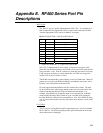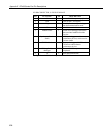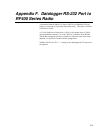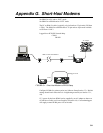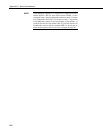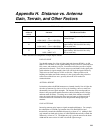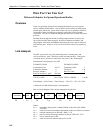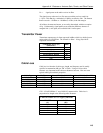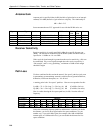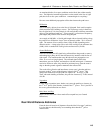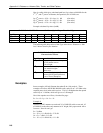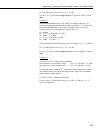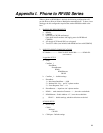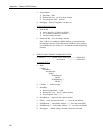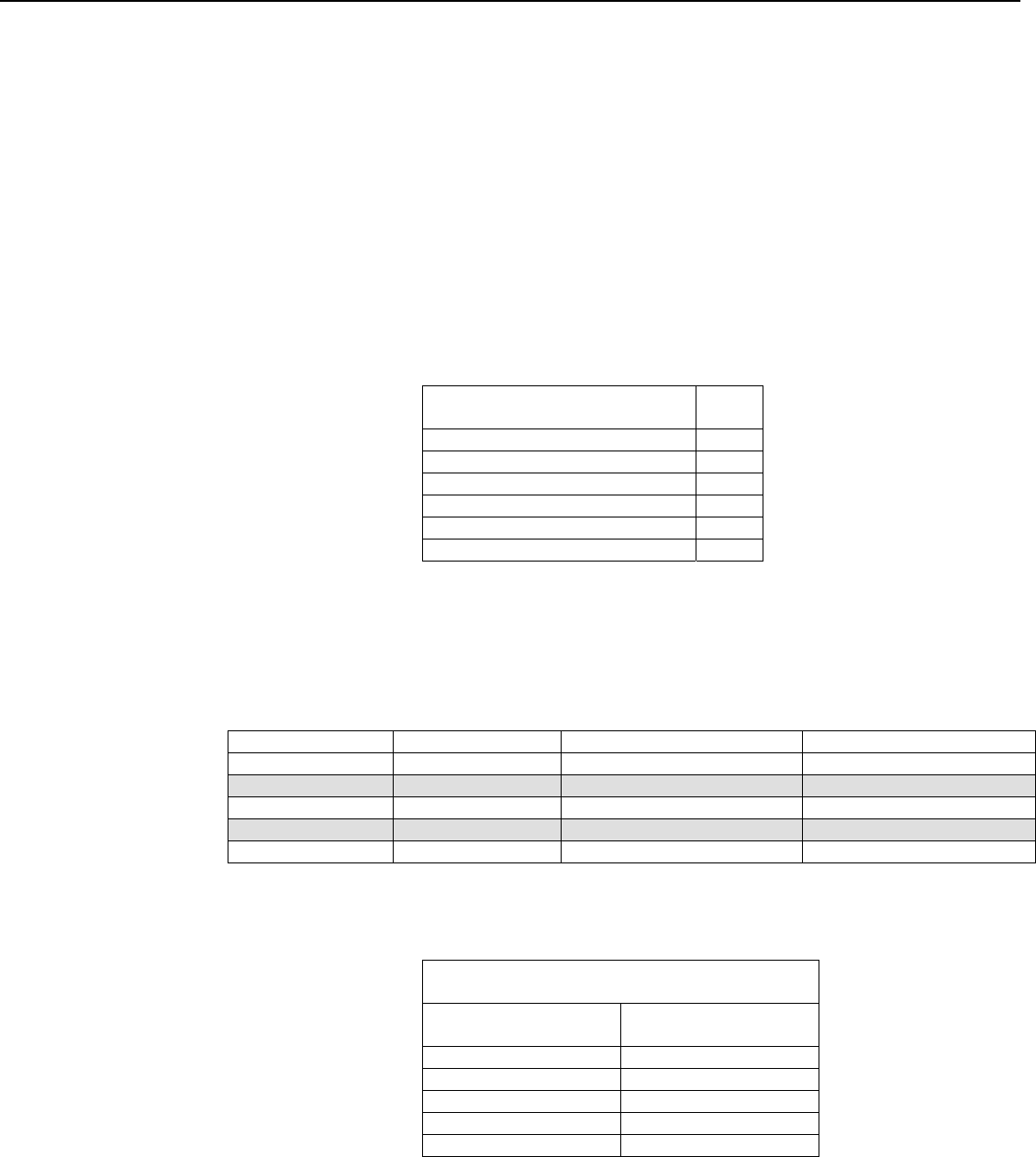
Appendix H. Distance vs. Antenna Gain, Terrain, and Other Factors
H-3
Pr => signal power at the radio receiver in dBm
The signal power at the receiver (Pr) must exceed the receiver sensitivity
(−110 or –104 dBm) by a minimum of 6 dB for an effective link. The amount
that Pr exceeds –110 dBm or –104 dBm (2.4 GHz) is the link margin.
All of these elements are known, or are easily determined, with the exception
of Lp. Unfortunately, signal path loss can make the difference between a
marginal link ½ mile apart, and a reliable link 10 miles apart!
Transmitter Power
Transmitter output power is often expressed in dBm, which is a decibel power
rating relative to 1 milliWatt. The formula is: dBm = 10 log (Pt) with Pt
expressed in milliWatts.
Transmitter Power (Pt)
(milliWatts)
dBm
10
10 10
50 (RF415) 17
100 (RF400 or RF410) 20
1000 30
5000 37
Cable Loss
Cable loss is a function of cable type, length, and frequency and is usually
specified as attenuation (dB) per 100’ of cable. Using a low loss cable
becomes very important as the cable run distances increase. Here are some
typical cable types and their properties:
Cable Type Outside Diameter Loss (dB/100’) @ 900 MHz Loss (dB/100’) @ 2.4 GHz
RG-58A/U .195” 21.1
COAX RPSMA-L .195” 11.1 18.8
RG-8 .405” 6.9
COAX NTN-L .405” 4.5 8.1
LMR-400 .405” 3.9 6.7
*CSI stocked antenna cables are shaded.
CSI’s “COAX RPSMA-L” uses LMR-195 antenna cable. Cable loss is
proportional to length as the following table illustrates.
LMR-195 Cable Loss vs. Length @ 900 MHz
LENGTH
(ft.)
LOSS
(dB)
100 11.1
50 5.6
25 2.8
10 1.1
60.7



